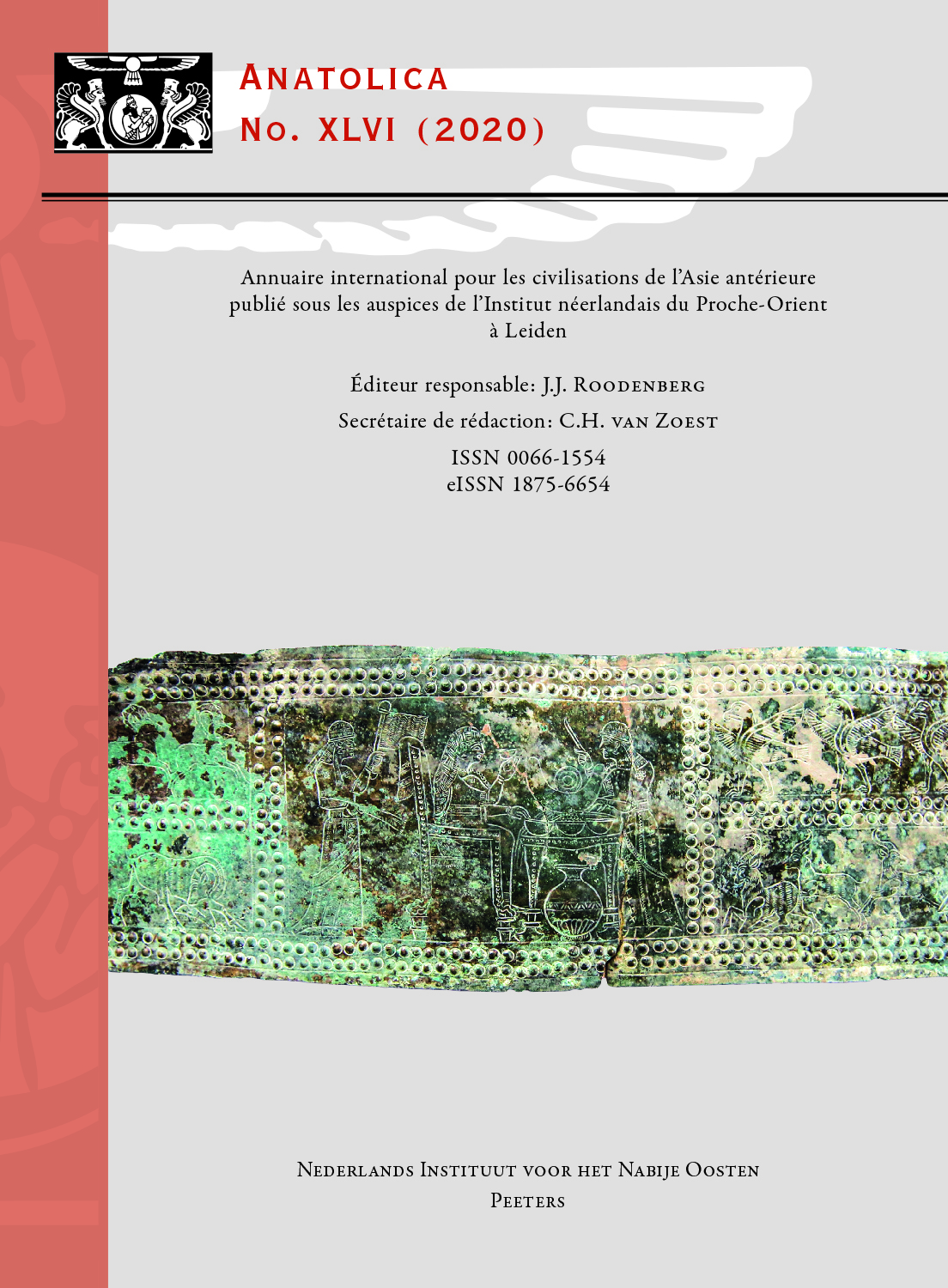 previous article in this issue previous article in this issue | next article in this issue  |

Preview first page |
Document Details : Title: On the Shifting Border Between Mesopotamia and the West Subtitle: Seven Seasons of Joint Turkish-German Excavations at Oylum Höyük Author(s): ÖZGEN, Engin , HELWING, Barbara Journal: Anatolica Volume: 29 Date: 2003 Pages: 61-85 DOI: 10.2143/ANA.29.0.2015512 Abstract : When approaching the modern Turkish-Syrian border from the wide plains of North-Western Syria, following the Qoueiq River, the traveller will encounter an East-West barrier at the southernmost foothills of the Taurus Mountains, the Resul Osman Dağları. Called Halap'a Bakan Dağları (literally: 'The mountains looking to Aleppo") by the local population, the Resul Osman Dağları and the Kurt Dağları that run perpendicular to the former in a North-South direction form steep ridges offering a wide view over the Syrian Plain. This well-watered plain is drained to the south by the Qoueiq River and its tributaries. The Qoueiq, the ancient Xhalos River (Xenophon, Anabasis I4,9), passes Aleppo only to reach a dead end in the al-Matah swamps to the south. It marks the continental watershed between the Orontes tributaries to the west, that flow into the Mediterranean, and the Euphrates to the east, that form the major waterway of Mesopotamia and flowing to the Persian-Arabic Gulf. |
 |


